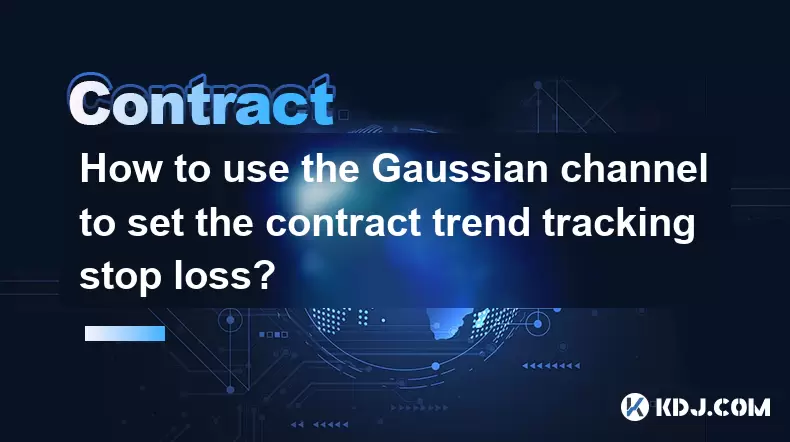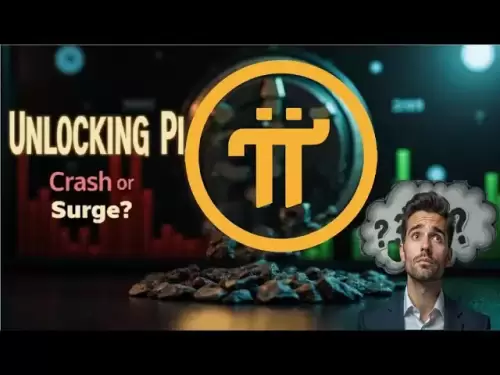-
 Bitcoin
Bitcoin $105,734.0170
-1.51% -
 Ethereum
Ethereum $2,414.7328
-3.26% -
 Tether USDt
Tether USDt $1.0002
0.00% -
 XRP
XRP $2.1748
-2.62% -
 BNB
BNB $647.5663
-1.72% -
 Solana
Solana $148.1710
-3.81% -
 USDC
USDC $0.9999
-0.01% -
 TRON
TRON $0.2799
-0.02% -
 Dogecoin
Dogecoin $0.1586
-4.17% -
 Cardano
Cardano $0.5440
-5.03% -
 Hyperliquid
Hyperliquid $37.0680
-6.59% -
 Bitcoin Cash
Bitcoin Cash $501.2052
-4.01% -
 Sui
Sui $2.6846
-3.47% -
 Chainlink
Chainlink $12.8488
-3.38% -
 UNUS SED LEO
UNUS SED LEO $8.9480
-1.51% -
 Avalanche
Avalanche $17.2059
-3.87% -
 Stellar
Stellar $0.2270
-4.75% -
 Toncoin
Toncoin $2.7889
-3.93% -
 Shiba Inu
Shiba Inu $0.0...01126
-1.76% -
 Litecoin
Litecoin $83.6893
-3.36% -
 Hedera
Hedera $0.1445
-4.49% -
 Monero
Monero $312.4014
-2.58% -
 Dai
Dai $1.0000
0.00% -
 Ethena USDe
Ethena USDe $1.0001
-0.01% -
 Polkadot
Polkadot $3.2920
-3.32% -
 Bitget Token
Bitget Token $4.4629
-1.81% -
 Uniswap
Uniswap $6.5386
-8.42% -
 Aave
Aave $260.3780
-6.01% -
 Pepe
Pepe $0.0...09308
-4.54% -
 Pi
Pi $0.4864
-3.04%
How to short with Upbit leverage trading
Before engaging in shorting with Upbit leverage, traders must be cognizant of the potential risks, including the possibility of losses exceeding initial investments, margin calls, and high volatility in the cryptocurrency market.
Nov 20, 2024 at 06:50 am

How to Short with Upbit Leverage Trading
Upbit is a cryptocurrency exchange that offers leverage trading, which allows traders to borrow funds to increase their potential profits (or losses). Shorting is a trading strategy in which you sell a borrowed asset in the hope that its price will fall, allowing you to buy it back at a lower price and return it to the lender, pocketing the difference.
Risks of Shorting
Before you start shorting with leverage, it is important to understand the risks involved.
- Losses can exceed your initial investment. When you short with leverage, you are borrowing money to increase your position size. This means that you can lose more money than you initially invested.
- Margin calls: If the price of the asset you are shorting rises, you may receive a margin call from Upbit. This means that you will need to deposit more funds into your account to cover your losses. If you are unable to do so, your position may be liquidated.
- High volatility: The cryptocurrency market is highly volatile, which means that the price of assets can fluctuate rapidly. This can make it difficult to predict the direction of the market and can lead to substantial losses.
How to Short with Upbit Leverage Trading
If you understand the risks involved and are comfortable proceeding, here is a step-by-step guide on how to short with Upbit leverage trading:
- Open an Upbit account. If you do not already have an Upbit account, you will need to open one.
- Fund your account. You will need to deposit funds into your Upbit account before you can start trading.
- Enable leverage trading. Leverage trading is not enabled by default on Upbit. To enable it, you will need to go to the "Settings" tab and click on the "Enable Leverage Trading" button.
- Choose a trading pair. Upbit offers leverage trading on a variety of trading pairs. You will need to choose the trading pair that you want to trade.
- Select your leverage. You can choose the amount of leverage that you want to use. The higher the leverage, the greater your potential profits (or losses).
- Place your order. Once you have selected your trading pair and leverage, you can place your order. You will need to specify the order type, the order size, and the price at which you want to execute the order.
- Monitor your position. Once you have placed your order, you will need to monitor your position closely. If the price of the asset you are shorting falls, you will make a profit. If the price rises, you will lose money.
- Close your position. When you are ready to close your position, you will need to place a closing order. You can place a closing order at any time, but it is important to remember that you will need to pay back the borrowed funds before you can withdraw your profits.
Tips for Shorting with Leverage
Here are a few tips for shorting with leverage:
- Start small. When you are first starting out, it is important to start small. This will help you to get a feel for the market and to manage your risk.
- Only trade with funds that you can afford to lose. As mentioned earlier, losses can exceed your initial investment. Never trade with money that you cannot afford to lose.
- Use stop-loss orders. Stop-loss orders can help you to limit your losses if the market moves against you.
- Don't chase losses. If you lose money on a trade, don't try to chase the loss by increasing your position. This is a surefire way to lose even more money.
- Be patient. Trading is a marathon, not a sprint. Don't expect to get rich quick.
Disclaimer:info@kdj.com
The information provided is not trading advice. kdj.com does not assume any responsibility for any investments made based on the information provided in this article. Cryptocurrencies are highly volatile and it is highly recommended that you invest with caution after thorough research!
If you believe that the content used on this website infringes your copyright, please contact us immediately (info@kdj.com) and we will delete it promptly.
- Bitget Wallet's Fomo Thursdays: Big Wins and a 20% Winners Rate!
- 2025-07-02 16:50:12
- MAGACOIN FINANCE: The Altcoin Presale Turning Heads in the Crypto Scene
- 2025-07-02 16:55:12
- XRP, Escrow, and Token Management: A Deep Dive into Ripple's Strategy
- 2025-07-02 17:10:14
- Neo Pepe Ignites Crypto Rally: Analyst Predictions & The Memetrix Revolution
- 2025-07-02 17:15:12
- Dogecoin, Price Prediction, and Retail FOMO: What's the Hype?
- 2025-07-02 17:20:12
- Toncoin's Tightrope Walk: Chart Analysis and Bounce Potential
- 2025-07-02 17:50:17
Related knowledge

How to use the price slope to filter the false breakthrough signal of the contract?
Jun 20,2025 at 06:56pm
Understanding the Concept of Price Slope in Contract TradingIn contract trading, especially within cryptocurrency derivatives markets, price slope refers to the rate at which the price changes over a specific time period. It helps traders assess the strength and sustainability of a trend. A steep slope may indicate strong momentum, while a shallow slope...

How to determine the expected volatility of the contract through the volatility cone?
Jun 19,2025 at 12:28pm
Understanding the Basics of Volatility in Cryptocurrency ContractsIn the realm of cryptocurrency trading, volatility is a key metric that traders use to assess potential risk and reward. When dealing with futures contracts, understanding how volatile an asset might become over time is crucial for position sizing, risk management, and strategy developmen...

How to formulate a contract intraday trading plan in combination with the pivot point system?
Jun 21,2025 at 03:42pm
Understanding the Basics of Pivot Points in Cryptocurrency TradingPivot points are technical analysis tools used by traders to identify potential support and resistance levels. These levels are calculated using the previous day's high, low, and closing prices. In the context of cryptocurrency trading, where markets operate 24/7, pivot points help trader...

How to adjust the contract position ratio through the price fluctuation entropy?
Jun 22,2025 at 11:42am
Understanding Price Fluctuation Entropy in Cryptocurrency ContractsIn the world of cryptocurrency futures trading, price fluctuation entropy is a relatively new concept used to measure market volatility and uncertainty. It derives from information theory, where entropy refers to the degree of randomness or unpredictability in a system. In crypto contrac...

How to use the volume swing indicator to predict the contract volume-price divergence?
Jun 18,2025 at 11:42pm
Understanding the Volume Swing IndicatorThe volume swing indicator is a technical analysis tool used primarily in cryptocurrency trading to evaluate changes in volume over time. Unlike price-based indicators, this metric focuses solely on trading volume, which can provide early signals about potential market reversals or continuations. The key idea behi...

How to use the Gaussian channel to set the contract trend tracking stop loss?
Jun 18,2025 at 09:21pm
Understanding the Gaussian Channel in Cryptocurrency TradingThe Gaussian channel is a technical indicator used primarily in financial markets, including cryptocurrency trading, to identify trends and potential reversal points. It is based on statistical principles derived from the normal distribution, commonly known as the Gaussian distribution or bell ...

How to use the price slope to filter the false breakthrough signal of the contract?
Jun 20,2025 at 06:56pm
Understanding the Concept of Price Slope in Contract TradingIn contract trading, especially within cryptocurrency derivatives markets, price slope refers to the rate at which the price changes over a specific time period. It helps traders assess the strength and sustainability of a trend. A steep slope may indicate strong momentum, while a shallow slope...

How to determine the expected volatility of the contract through the volatility cone?
Jun 19,2025 at 12:28pm
Understanding the Basics of Volatility in Cryptocurrency ContractsIn the realm of cryptocurrency trading, volatility is a key metric that traders use to assess potential risk and reward. When dealing with futures contracts, understanding how volatile an asset might become over time is crucial for position sizing, risk management, and strategy developmen...

How to formulate a contract intraday trading plan in combination with the pivot point system?
Jun 21,2025 at 03:42pm
Understanding the Basics of Pivot Points in Cryptocurrency TradingPivot points are technical analysis tools used by traders to identify potential support and resistance levels. These levels are calculated using the previous day's high, low, and closing prices. In the context of cryptocurrency trading, where markets operate 24/7, pivot points help trader...

How to adjust the contract position ratio through the price fluctuation entropy?
Jun 22,2025 at 11:42am
Understanding Price Fluctuation Entropy in Cryptocurrency ContractsIn the world of cryptocurrency futures trading, price fluctuation entropy is a relatively new concept used to measure market volatility and uncertainty. It derives from information theory, where entropy refers to the degree of randomness or unpredictability in a system. In crypto contrac...

How to use the volume swing indicator to predict the contract volume-price divergence?
Jun 18,2025 at 11:42pm
Understanding the Volume Swing IndicatorThe volume swing indicator is a technical analysis tool used primarily in cryptocurrency trading to evaluate changes in volume over time. Unlike price-based indicators, this metric focuses solely on trading volume, which can provide early signals about potential market reversals or continuations. The key idea behi...

How to use the Gaussian channel to set the contract trend tracking stop loss?
Jun 18,2025 at 09:21pm
Understanding the Gaussian Channel in Cryptocurrency TradingThe Gaussian channel is a technical indicator used primarily in financial markets, including cryptocurrency trading, to identify trends and potential reversal points. It is based on statistical principles derived from the normal distribution, commonly known as the Gaussian distribution or bell ...
See all articles

























































































